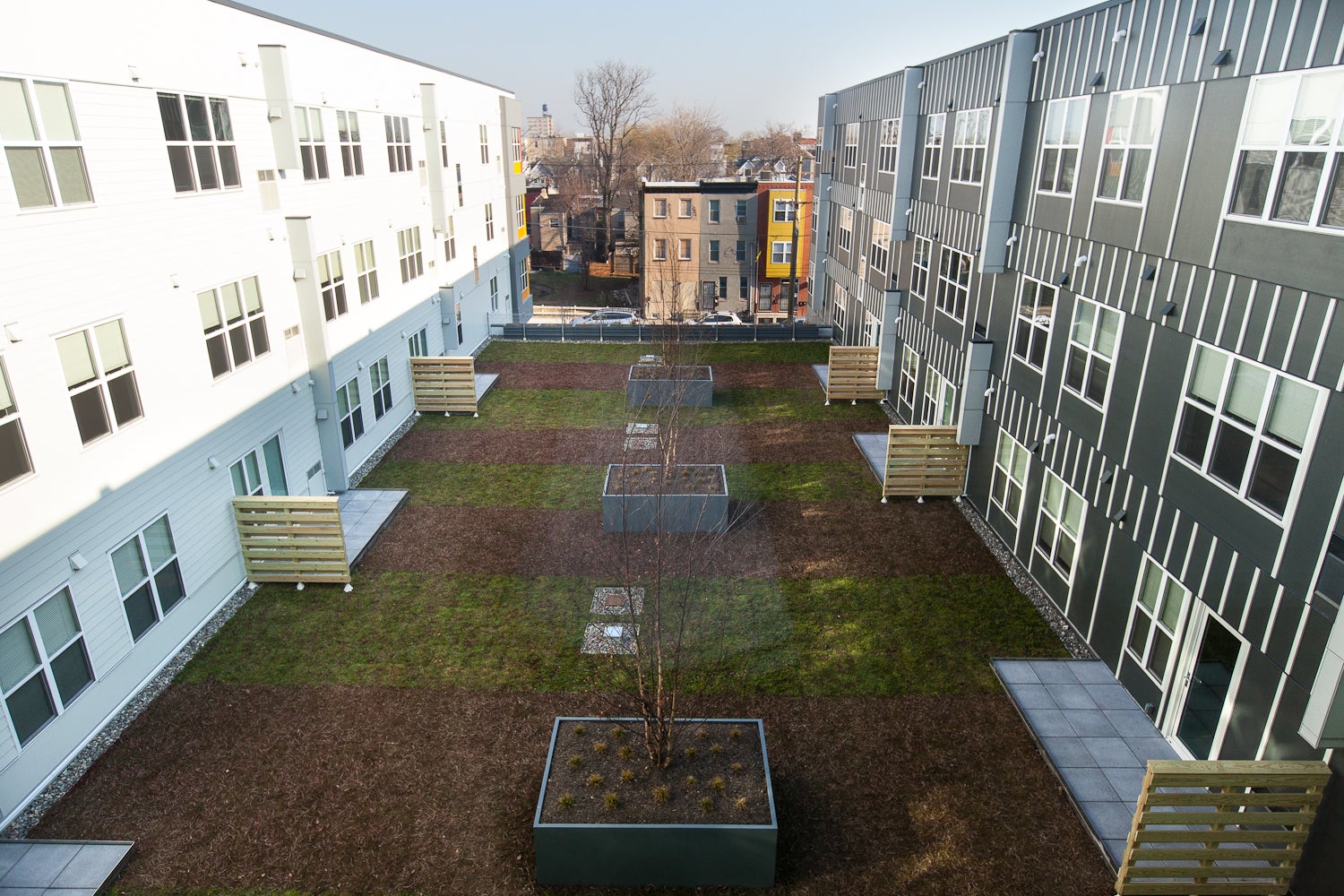The economic benefits of Green City, Clean Waters

Philadelphia Water’s big investments in green stormwater infrastructure during the Nutter years have earned major plaudits from sustainability advocates, and captured the attention of national and international civic leaders hoping to avoid breaking the bank on expensive gray infrastructure, and now there’s some evidence they’re helping Philly’s economy too.
At the quarterly meeting of the Sustainable Business Network’s Green Stormwater Infrastructure Partners consortium last Wednesday, Lee Huang, Kate Raman, and Daniel Miles of Econsult Solutions previewed some of the findings from their soon-to-be-released Local Economic Impact report on Philadelphia Water’s (PWD) Green City Clean Waters program.
Green City, Clean Waters (GCCW) is Philadelphia’s 25-year plan to fulfill the city’s stormwater management obligations under federal law. Philly’s combined sewer system is inadequate to support current levels of development. Even minor storms can overload the system, sending untreated sewage into our rivers and streams in violation of the Clean Water Act.
Traditional approaches to stormwater management involve expanding expensive gray infrastructure, like wastewater treatment facilities, pipelines, and large underground storage tanks. But the Nutter administration deemed those approaches unaffordable for Philadelphia. Instead, the city inked a partnership agreement with the EPA that allowed Philly to pursue a more affordable $1.6 billion green infrastructure strategy. This approach will attempt to keep the first inch of rainfall out of the sewers through investments that help trap and absorb stormwater, including green spaces that absorb runoff, rain barrels, rain gardens, planters, green curb bumpouts, and wetlands.
The city is building some gray infrastructure too, but the overall thrust of the GCCW investments have centered on soaking up stormwater at the surface. The program also includes regulations requiring developments of a certain size to manage their stormwater, and a shift in water pricing that disincentivizes impervious surfaces.
Green City, Clean Waters has resulted in 107 public projects and 389 private projects between 2006 and 2015, according to Lee Huang, senior vice president at Econsult and a board member of the Sustainable Business Network (SBN). By the end of the program’s 25 years, there will be thousands of green stormwater interventions scattered throughout the combined sewer areas of the city.
What’s been the impact of all these projects on the economy?
Econsult’s Kate Raman explained that it’s difficult to analyze the green stormwater infrastructure industry the way one analyzes other sectors, since the mix of firms transcends traditional industry classifications. But Econsult did have access to firm-level data from members of Green Stormwater Infrastructure Partners—the trade group of 60 businesses working in this space organized by SBN—and this data provided the basis for the report.
Among the findings:
-
Operations associated with GSI Partners account for about $35 million in total annual revenues for the 60 GSIP firms.
-
Local operations are generating an annual economic impact of $57 million in Philadelphia.
- GSI Partners operations support more than 430 direct, indirect, and induced jobs. Lee Huang added that the public investment in GCCW over the 25 years will lead to a total expenditure impact of $3 billion within the city, supporting an estimated 940 jobs each year.
Those numbers are the result of modeling the promised direct investment by PWD over the next 25 years, combined with Econsult’s estimate of what they believe the private sector will invest during that timeframe, Huang explained.
Jobs impact modeling should always be taken with a grain of salt, but Huang says Econsult’s model likely underestimates the local jobs impact in this case, given PWD’s commitment to spending the money with local firms and residents.
Raman explained why the money was more likely to stay in the local economy: “When a city builds the giant underground stormwater holding tank, it’s usually a multinational firm that has the equipment and capital to bid on completing a project like that,” she said.
“For Green City Clean Waters though, it provides opportunities for smaller local firms and local employees. The projects are smaller in scale, there are more of them, and they continue on for years. Whereas after the giant holding tank is built, the work is done.”
Huang anticipated that the regulations, incentives, and public investments would encourage an increasing rate of private sector investment as time goes on. Even harder to measure, but still significant, is the reputational gain to Philadelphia from being the first to dive in to this strategy, and establish a best-in-class green stormwater industry.
Philadelphia’s apparent success in this area has led other cities struggling to meet their obligations under the Clean Water Act to negotiate alternatives with EPA in favor of more green infrastructure solutions.
Washington, D.C. is emulating Philadelphia’s approach, said Raman. After GCCW moved forward, D.C. officials asked the EPA for permission to incorporate green stormwater infrastructure into their water management plan, and shrink the scope of their gray infrastructure expansion.
Read the full report.
WHYY is your source for fact-based, in-depth journalism and information. As a nonprofit organization, we rely on financial support from readers like you. Please give today.



